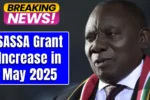In 2025, major updates to Centrelink’s Youth Allowance are set to make a significant difference for 22-year-old Australians. As the cost of living continues to rise, the government is adjusting payments and eligibility thresholds to better support young people who are studying, training, or looking for work. These changes reflect a broader push to modernize Australia’s welfare system to meet the evolving needs of young adults.
Bigger Payments, Greater Relief
Starting January 1, 2025, Youth Allowance rates have increased. Single 22-year-olds living at home will now receive $472.50 per fortnight, up from $455.20. Those living away from their parents will see their payments rise to $663.30 per fortnight, an increase from $639.00.
- For those with children, the amount has climbed to $836.60. These adjustments are intended to help young Australians better cope with soaring costs in areas like rent, food, and utilities.
- This payment boost is seen as a necessary move, particularly as many students and young workers face higher living expenses than in previous years. The government acknowledges that financial pressures can hinder education and employment prospects if not addressed early.
Easing the Income Test Thresholds
- In addition to the increase in payment amounts, income thresholds have also been lifted. The lower income threshold is now $528.00 per fortnight, while the upper threshold has moved to $633.00.
- This means recipients can now earn slightly more without immediately seeing their Youth Allowance payments reduced. The move aims to encourage young people to take up part-time or casual work without the fear of losing crucial financial support.
- For many 22-year-olds balancing university studies with part-time employment, this change provides more breathing room to earn and save while still receiving the assistance they need.
Extra Support Through Supplementary Payments
Beyond the core Youth Allowance payments, recipients may also qualify for additional help. Rent Assistance is now available up to $175.30 per fortnight, depending on the amount of rent being paid and living arrangements.
An Energy Supplement, automatically included, ranges between $5.90 and $8.80 per fortnight. Furthermore, eligible students can also access a one-off Education Entry Payment of $208 to help cover study-related expenses at the start of the year.
These supplementary benefits aim to ensure that the support is holistic, addressing both educational and everyday living costs without requiring multiple complex applications.
Potential Policy Changes on the Horizon
While the current updates are substantial, more reforms could be on the way. The Australian Greens have proposed major changes that, if implemented, would further benefit 22-year-olds. One key proposal is lowering the age for JobSeeker eligibility from 22 to 18, which would allow younger Australians to access higher payments sooner.
Another major push is to remove the Parental Income Test for Youth Allowance recipients living away from home, meaning that students from middle-income families could receive more support without their parents’ earnings reducing their eligibility.
If these proposed reforms pass, it is estimated that around 200,000 young Australians could be better off, with average increases in Youth Allowance payments of up to $4,700 per year.
What This Means for 22-Year-Olds in 2025
For many young Australians, these changes mark a pivotal moment. Receiving higher payments and having more generous income thresholds means greater financial independence. Students, apprentices, and young jobseekers can focus more on building their futures rather than constantly worrying about day-to-day survival.
Importantly, these updates reflect a shift toward recognizing the unique economic pressures young adults face today. Whether studying, working, or training, 22-year-olds can now expect a little more help from the social safety net designed to give them a stronger start.
Conclusion:
The 2025 Centrelink Youth Allowance updates are more than just a numbers game they represent a broader investment in the potential of young Australians. With increased payments, relaxed income rules, and additional benefits available, the future looks slightly less daunting for 22-year-olds. As discussions about further reforms continue, it’s clear that supporting young people is becoming a growing national priority.




